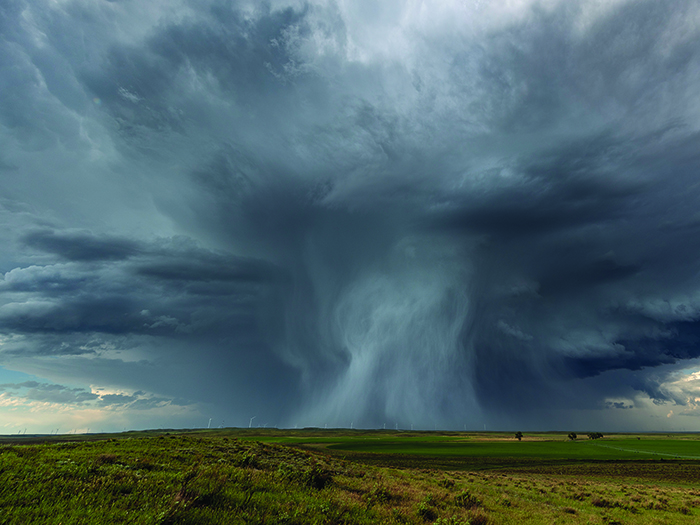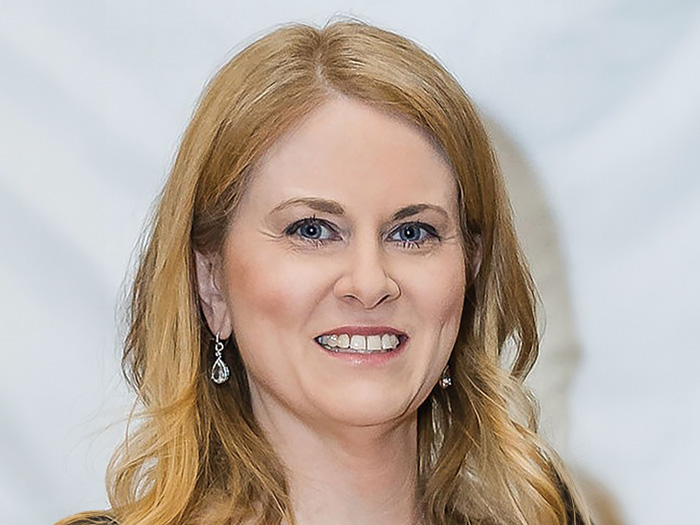Risk Scenario
Underreported Property Values Threaten to Sink a Real Estate Investment Trust
Disclaimer: The events depicted in this scenario are fictitious. Any similarity to any corporation or person, living or dead, is merely coincidental.
PART ONE: A BLANKET APPROACH
It’s not every day that a Real Estate Investment Trust less than 30 years into its existence cracks the Fortune 500. But that’s the case with Reed Corp.

Aggressively run, the firm’s founders have the nerve to move quickly, outbid rivals and carry debt levels fit for only the stoutest hearts.
Reed Corp built its brand as an owner and developer by acquiring shopping malls and commercial office space in the Chicago area and managing them to maximize client satisfaction. It also proved adept at designing and building properties, usually a blend of retail and higher-end residential, from scratch.
Its formula worked from the start. And it soon sought opportunities elsewhere.
Retail and office rental spaces in Memphis, Nashville, Detroit, Dallas, Phoenix, Washington, D.C. and dozens of other cities and metro regions were either developed by Reed or fell under the company’s control on a 30-year-run that seemed almost magical in its string of successes.
However, it wasn’t until 22 years into its existence that the company hired someone that carried the formal title of risk manager.
Previously, risk management responsibilities, including the purchase of insurance, were handled by the office of CFO Brandon Ritchie. But since 2013, Mandy Farmer, a graduate of the Kellogg School of Management at Northwestern University, served as risk manager.
In her first few years with the company, Mandy was thrilled to be part of a business that was expanding rapidly, paying well and giving her ample opportunities for travel. As she settled into the job, she did her best to balance the Reed Corp’s go-go culture with what she was quickly learning were best risk management practices in the real estate and construction sectors.
A particular conversation she had with a property underwriter during renewals got her thinking.
“As things stand, it looks like you’re using a blanket approach to property valuations across the portfolio,” the underwriter said.
“You’re right, that’s what we’ve had in place,” Mandy answered. “Do you think there’s a better way?”
“Not sure off the bat that it’s better, per say,” the underwriter said.
“But I think it’s worth digging into this issue. That is if you can get the cooperation of the rest of your team. You have to watch out for differences in value regionally, especially when we’re talking replacement values and how those can vary depending on what part of the country you’re in,” the underwriter said.
“Gotcha,” Mandy said, letting the possibilities of what the underwriter mentioned sink in.
That conversation took place in December of 2020.
PART TWO: A FORECAST OF STORMS
Nature has an innate way of showing humanity its vulnerabilities and such turned out to be the case with Reed Corp and that phenomenon we call the tornado.

As 2020 grew into 2021 and beyond, Mandy Farmer watched climate and weather developments in her home country and elsewhere with an increasing sense of trepidation. Hail storm and tornado strikes were appearing with increasing intensity in places heretofore rarely seen before.
Tornadoes in the United Kingdom and west of Seattle? Hail the size of golf balls pelting northern Texas?
Motivated by yes, fear, but also a sense of professional responsibility, Mandy began speaking up more and more in finance meetings on the concept that the underwriter had mentioned. That the company’s existing approach of blanket values across the portfolio might not be its best path.
She also brought it up with her broker.
“I see what you’re saying, and we should be able to help you with this,” the broker said. “We can at least run some analytics and see if we can come up with some kind of perspective on where your actual values per square foot may differ some, according to region,” he said.
“How soon do you think we can get something actionable?” Mandy asked.
“It’s a heavy lift, but if we can get enough cooperation from your treasury, we should be able to have something for you in a couple of weeks,” the broker said.
That conversation occurred in March of 2021.
And then it happened, in April of that very same year. In a series of violent storms so haphazard and destructive that they seemed spawned by some demented genius, Reed Corp’s holdings in three different areas were struck by tornadoes in a three-week span. First was a rash of tornadoes in Dayton, Ohio of all places, flattening more than one million square feet of Reed Corp-owned rental properties.
Then it was another tornado strike, this time in Nashville, that rendered inoperable more than 750,000 square feet of retail and another 500,000 square feet of office space.
Last but not least, a late-night nightmare of a storm, a twister that took down yet another substantial Reed property in Orlando, Fla.
“Since when does Florida get tornadoes?” thundered Brandon Ritchie in a conversation with Mandy Farmer.
Mandy just stared at him, not sure what to say.
It was when Reed Corp filed claims with its insurers where the conversation got detailed, voluminous and painful.
PART THREE: PAINFUL GAPS
In conversations with her commercial insurance brokers and underwriters, Mandy Farmer soon learned the sad truth. She’d been on the right track when, goaded by one of her underwriters, she went down the path of trying to get the closest possible valuations for Reed Corp’s now vast real estate holdings.
When it came to actual replacement values, the tornado losses in Nashville and Dayton exceeded Reed Corp’s coverage by some $10 million. Spikes in steel and lumber prices and higher labor costs that impacted the markets in 2021 weren’t exactly on everyone’s radar in the beginning of 2020, so the gap in the Nashville and Dayton claims, though painful, weren’t looked at askance by the carriers, which in good faith, covered it.
The Florida loss, though, was another matter. That was where Reed Corp’s blanket approach to property valuations resulted in substantial pain. Values per square foot that were pretty close to the mark in Dayton and Nashville were woefully off the mark in Orlando, by as much as 50%.
The “Orlando Gap” became a notorious part of Reed Corp’s company lore. The uninsured cost of it breached $50 million.
For a company that ran on tight margins, despite its glowing top-line numbers, the losses erased a third of the profit margin in 2021.
On top of that, and perhaps even more damaging for the long-term, Reed Corp’s reputation in the underwriting community was damaged.
“Going forward, you’re going to have to demonstrate a better methodology for property valuations,” said one underwriter to Mandy Farmer in a conversation that she would remember for a long time.
“Adding to it was that there was no firm calculus between you and finance to track increases in property values and replacement costs over time, regardless of location,” the underwriter said.
The lead broker on Mandy’s property program gave it to her in the most direct terms possible: “You’re probably looking at premium increases of around 50% from those carriers that will cover you. And in addition to that, you can expect carriers to place margin clauses on your policies,” he added.
Was it Mandy Farmer’s fault that a triple tornado strike had so damaged Reed Corp? Of course not.
Was it anybody’s fault that Mandy was on the right path in trying to get the right property values across the portfolio but couldn’t get there in time?
It was no one’s fault. It was, however, an example of how ruthless nature and other circumstances can be in exposing an organizational vulnerability. &
![]()
Risk & Insurance® produced this scenario in conjunction with Berkshire Hathaway Specialty Insurance. This scenario is provided for general educational and informational purposes only as an example of the type of claim(s) that may be submitted under a property policy. Applicability of coverage terms depends on the actual facts of each individual claim and the terms, conditions and exclusions of the applicable insurance policy. The information contained herein is for informational purposes only and may not be relied upon as legal, financial, regulatory, compliance, or any other type of professional advice. Not all products and services are available in every jurisdiction, and insurance coverage is governed by actual policy language.
Reed Corp was hit with back-to back property losses and found itself underinsured. While extreme weather events are increasingly inevitable and unpredictable, this situation could be mitigated or avoided by putting a strong valuation methodology and action plan in place with your broker and underwriter, considering the following:
- Providing thorough, accurate, quality data. Underwriters determine capacity deployment, premium, and terms and conditions based on the data submitted to them for review. The better the quality of the data, the better, more accurate coverage the underwriter can put in place.
- On an annual basis, and prior to every renewal, engaging your broker to review your SOV (Statement of Values). Both your broker and underwriter can provide data related to trends in values to assist in this process.
- Realizing that supply and demand factors change year to year. At the time of Reed’s losses, labor, steel and lumber costs were at all-time highs — which heightened exposure and underscores the importance of revisiting values annually.
- Being aware of the differences between market value, assessed value and replacement cost value. Confusing these terms can lead to underinsuring a property.
- Assessing each risk on its individual merit. No two occupancies are alike. For example, an open-air mall in Texas would have a much different ITV (Insurance To Value) than a 12 story office building there. In addition, regional location modifiers should not be ignored. After devastating tornadoes struck three different areas. Reed Corp quickly learned that the replacement cost value for a building in Ohio is much different than one in Florida.
Claims are inevitable. While Reed Corp is anticipating some challenging renewal cycles ahead, they are committed to addressing their underinsured values and putting in place a corrective action plan. An underwriter devoted to partnering with clients for the long term will be eager to collaborate, and not penalize them for doing the right thing.











